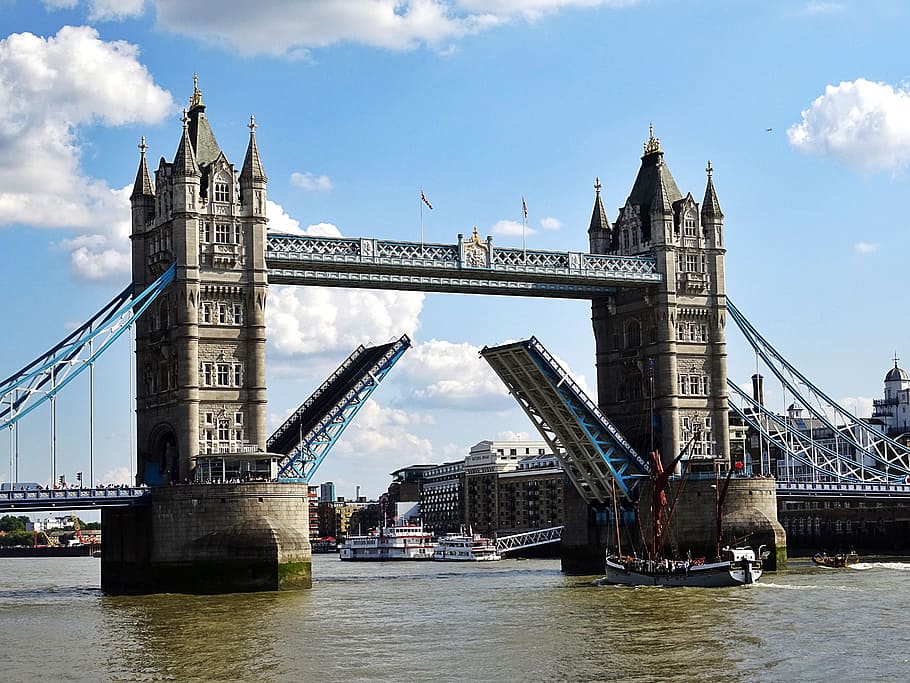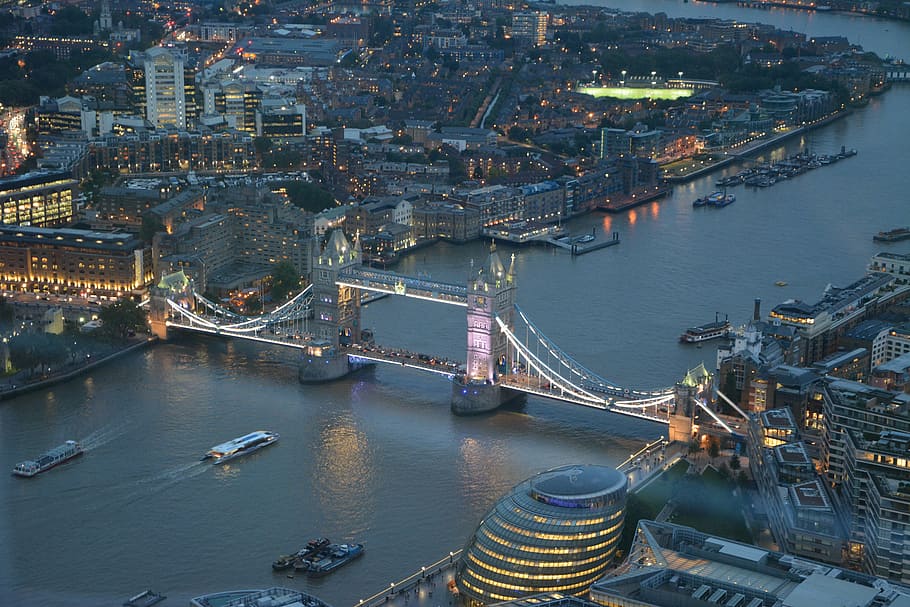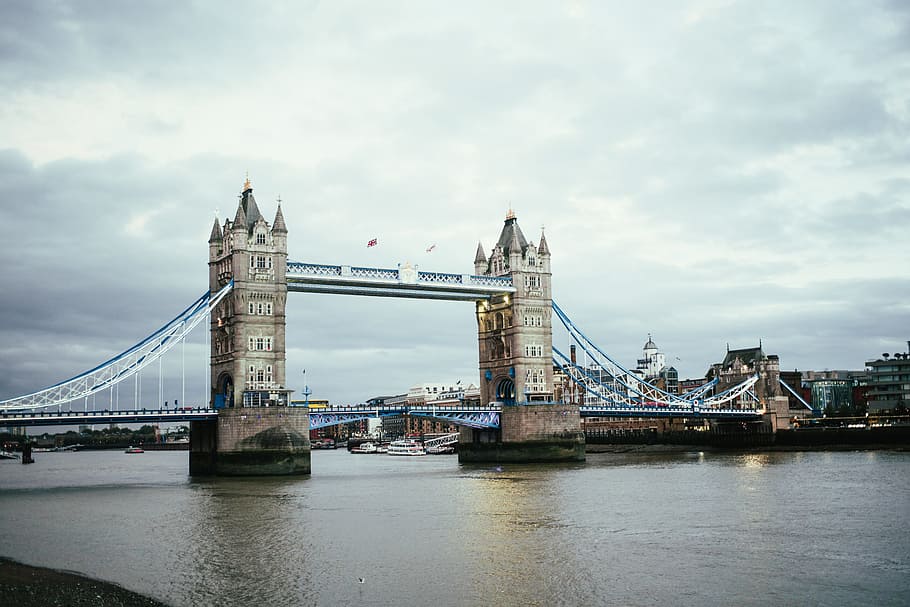設立・運営 2021.11.19
EM7 キャプティブの設立 No.7 (フェーズ1:事業化調査)
目次
- 当コラム内の文章・画像等の無断転載・引用・複製を固く禁じます。
- ステップ 1. キャプティブで引受けるリスクを明確にする
- ステップ 2. 再々保険の確保が可能か確認する
- ステップ 3. 元受保険契約の補償内容、キャプティブ出再の可否、再保険条件を確認する
- ステップ 4. ドミサイルの保険監督当局からの認可取得の可能性を検証、確認する
- ステップ 5. 最終的に、事業化の可否を分析・評価する
- 1.キャプティブで引受けるリスクを明確にする
- 2.再々保険の確保が可能か確認する
- 3.元受保険契約の補償内容、キャプティブ出再の可否、再保険条件を確認する
- 4.ドミサイルの保険監督当局からの認可取得の可能性を検証、確認する
- 5.最終的に、事業化の可否を分析・評価する
- 今回のまとめ
- It is strictly forbidden to publish, copy, quote or distribute the contents of this column without permission.
- Step 1: Identify the risks to be underwritten by the captive
- Step 2: Ensure retrocession is available
- Step 3: Confirm primary policy coverages, captive ceding availability and reinsurance terms.
- Step 4: Review and confirm the possibility of obtaining approval from the domiciliary insurance regulator
- Step 5: Final analysis and assessment of feasibility
- 1. Identify the risks to be assumed by the captive
- 2. Confirmation of the availability of retrocession
- 3. Review the primary insurance policy’s coverage, availability of captive ceding, and reinsurance conditions.
- 4.Verify and confirm the possibility of obtaining a license from the insurance supervisory authority for Domicile
- 5. Final analysis and assessment of feasibility
- Summary of this issue
当コラム内の文章・画像等の無断転載・引用・複製を固く禁じます。
For those who prefer to read this column in English, the Japanese text is followed by a British English translation, so please scroll down to the bottom of the Japanese text.

グローバル・リンクでは、「キャプティブ設立のメリットと事業化の可能性を検討する最初のフェーズ(段階)」を「フェーズ1(第1段階:キャプティブの事業化調査)」と定義している。
「フェーズ1」は、その後の「フェーズ2」(キャプティブの設立)、「フェーズ3」(キャプティブの運営)に比べて、その目的が更に「5段階のステップ」に分かれるため、「フェーズ1」を「5段階のステップ」に分ける。
ステップ 1. キャプティブで引受けるリスクを明確にする
①「キャプティブ(自社専用保険会社)を設立する日本の親会社(以下、「親会社」)と日本の保険会社との間で既に締結されている、既存保険契約のうち、どの保険契約をキャプティブプログラムにするか」
②「現在は、保険を掛けていないが、キャプティブの設立を介して新たな保険を掛けると企業にとって大きなメリットがあるため、海外の再保険市場から再保険のサポートを得ることができる前提で、『海外の最先端の地震保険やサイバー保険等を掛けること』を検討して、それらをキャプティブプログラムにするか」
③「上記①の選択した保険と②を併せてキャプティブプログラムにするか」
これら①、②、③のうち、どれを選択するかを決める。
しかし、後に記すが「リスクマネジメント」をおこなうことにより、「キャプティブ化する保険」が徐々に増えていくことも当然起こりえるため、「キャプティブの設立」という目的を速やかに成就させるためには、上記①もしくは②を選んで、まずキャプティブを設立することを推奨している。その後、更におこなわれる「リスクマネジメント」によって、検討の対象としなかった保険のキャプティブ化を検討、実行する、また翌年の更新時に「新たな保険としてキャプティブ・プログラムを加えること」もあるからである。
このことと同時進行でおこなうことは、キャプティブを設立する会社が「現在掛けている保険の詳細」を詳しく調査することである。過去の様々な経緯や事情から「保険が的確に掛けられている場合ばかりではなく」、むしろその逆のことがほとんどであったが、この作業は地道であるがキャプティブの効用を高めるためには必須の作業である。この結果、一旦決まった「キャプティブ化する保険」が変更になることもあり、そういう点からも非常に重要なプロセスである。
ステップ 2. 再々保険の確保が可能か確認する
次のステップは「キャプティブへ出再する保険に関して、キャプティブからの再保険(元受保険から見れば「再々保険」に該当する)の確保ができるか否か」を調査する。キャプティブのリスクマネジメント(リスクヘッジ)のため、対象となる保険に関して、グローバル・リンクを通じて業務提携先である再保険ブローカー(保険仲立人)マルニックスによって、ロンドン・マーケットの世界的な再保険会社に対して、「再々保険」としてそのリスクを出再できるか否かを折衝、調査する。
ステップ 3. 元受保険契約の補償内容、キャプティブ出再の可否、再保険条件を確認する
「再々保険確保の道筋」がついた段階で、「元受保険会社」と、「キャプティブへの出再を前提とする保険契約の内容、キャプティブに出再する際の再保険条件(出再割合、再保険手数料率等)」について、グローバル・リンクが折衝、合意を取り付けておく。
ステップ 4. ドミサイルの保険監督当局からの認可取得の可能性を検証、確認する
「キャプティブ・プログラムの全体像」が固まった段階で、キャプティブの設立地(ドミサイル)の許認可条件と整合性の確認をおこなう。必要であればドミサイルの保険監督当局にも事前折衝して、「キャプティブの認可の可能性が高いこと」を調べる。
ステップ 5. 最終的に、事業化の可否を分析・評価する
最後に、グローバル・リンクは、これらの調査・折衝の結果を検討し、事業化後のキャプティブのキャッシュ・フロー等を予測して、事業化の可否を分析・評価、「キャプティブ設立の効果を享受できる事業化が可能であること」が判明したら、「キャプティブの設立」に関して最終検討をおこない、「キャプティブの事業化の最終報告」をおこない、キャプティブを設立するか否かの判断を親会社(キャプティブ・オーナー)が下すことを待つ。
これら「キャプティブの事業化調査(フェーズ1:第1段階))」の「各ステップ」の概要と留意点を以下に更に詳しく記していきたい。

1.キャプティブで引受けるリスクを明確にする
最初のステップは、上述の「①、②、③、どれを選択するか」を決める。キャプティブの設立認可を受けるには、キャプティブが元受保険会社からどのような保険リスクを再保険で引受けるかを明確にする必要があるからである。
その際には同時に、会社が抱える様々なリスクについて調査・分析し、保険へのリスク移転に優先的に取組むべきリスクを炙り出し、当該リスクに関わる現在の保険契約の補償内容を十分に精査する必要がある。「要改善事項」を明確化する、つまり「保険付保(保険を掛けること)のリスクマネジメント」も同時に行なうことになる。
キャプティブプログラム化すると大きな効用を生み出すリスクは、「巨大地震による大災害リスク」や「サイバーリスク」である。「頻度は高くないと予測されるが、ひとたび起きると巨額の損失が発生するリスク(低頻度・巨大損害リスク)」が最も適している。
既存の保険契約では、火災保険分野の商品である、「企業財産総合保険(企業財産包括保険)」を例に挙げると、保険商品名には、「総合」、また「包括」が付いているが、地震リスクは補償されていない。地震保険加入の折衝をしても、ごく限定的な補償額や補償範囲(財物損壊リスクのみ等)の提供に留まっている場合が多い。また、保険が「子会社単位で掛けられ、多数の保険証券に分かれていて、補償が限定的な割に『補償の重複』があるため、保険料コストが高い場合」、また「本社でも補償内容を十分に把握・管理できていないこと」がある。
このような状況は、この「リスクマネジメント」をおこなうことによって大幅に改善できる。「本格的なリスクマネジメントには、キャプティブの設立が最適である」とグローバル・リンクが推奨している所以がここにある。
この「リスクマネジメント」の結果を踏まえ、現在の保険契約の見直しや新規加入に向けて、グローバル・リンクを介して、元受保険会社から、「キャプティブ出再を前提にした元受保険契約の提案」を受けることになる。キャプティブへの「出再」を伴わない一般的な保険契約とは異なり、キャプティブへの出再を前提とした、広範かつ高額な補償限度額を希望する場合は、その見積提示に応じる保険会社は限定的になることに留意する必要がある。
グローバル・リンクのキャプティブプログラムでは、この「リスクマネジメント」をおこなうため、「フェーズ1(キャプティブの事業化調査)」の契約と同時に「リスクマジメントに関わるコンサルティング契約」を締結することとなっている。後者の契約書によって、グローバル・リンクは、「親会社」より「リスクマネージャー」の委嘱を受け、元受保険会社、ドミサイルのキャプティブマネジメント会社、再保険会社に対して、業務提携先の再保険ブローカー等とともに折衝をおこなうことになる。
2.再々保険の確保が可能か確認する
前述のとおり、「元受保険会社からは、『キャプティブが引受ける再保険のリスクヘッジ策の確認』として、ロンドン保険市場の再保険会社が再々保険を引受けるか否かの確認を求められる」ため、グローバル・リンクを通じて、業務提携先の再保険ブローカー、「マルニックス」によって、ロンドン再保険市場にアプローチ、出再したい保険の引受先となる再保険会社を調査、折衝して、「再々保険の保険引受枠」(以下「キャパシティ」)確保の確認を得る必要がある。
「廉価で広範な補償を信頼性の高い再保険会社から確保すること」は、キャプティブ経営の所期の事業収支を安定的に維持するためには、最も重要なことである。したがって、キャプティブプログラムの効用を最大限に引き出すには、「低廉な再保険料コストで広範な補償を長期にわたり提供できる、競争力があり高い信頼性を有する再保険会社を世界の再保険市場から選定・確保できる専門家の存在が鍵」になる。
3.元受保険契約の補償内容、キャプティブ出再の可否、再保険条件を確認する
元受保険会社に対して元受保険の引受を打診するためには、「キャプティブプログラム(キャプティブの概要、保険付保の対象リスク、被保険者、想定保険価額、再々保険、ドミサイル、スケジュール等)の全体像」に関する専門的な説明が必要になる。そのうえで、「キャプティブへの出再が可能か」を確認して、元受保険契約の補償内容と併せて、再保険条件(出再比率、再保険手数料、その他の引受条件(キャプティブのセキュリティ確保等))の暫定的な提示を依頼することとなる。
元受保険会社を選定するポイントは、①親会社のリスクマネジメントにとって重要な「元受保険契約の補償範囲や補償限度額が希望する水準に達しているか否か」、また②キャプティブの事業収支にとって重要な「キャプティブにより多くの保険リスクを移転できるか(=出再比率が高いか)、再保険手数料が抑制的か(=再保険手数料率が低いか)」である。
なお、「元受保険契約の内容およびキャプティブへの出再条件が確定する」時期は、親会社としてキャプティブ設立の意思決定を正式に行なった後、スタートする「キャプティブの設立(フェーズ2)」の段階において、元受保険会社から元受保険契約に関する見積提示を受けた後になる。
4.ドミサイルの保険監督当局からの認可取得の可能性を検証、確認する
「元受保険契約」、「再々保険契約」のフレーム(構造)が固まったところで、キャプティブを設立するドミサイルの保険監督当局(米国ハワイ州の場合は、ハワイ州保険局)に対して、キャプティブの概要(キャプティブの申請区分(Class)、資本金、引受リスク、元受保険契約、再々保険契約、親会社等)を説明、キャプティブ設立の可否の調査をドミサイルでのキャプティブの運営・管理業務を委託する、グローバル・リンクの業務提携先、「キャプティブマネジメント会社」によって行なう。
なお、保険監督当局へのキャプティブ申請の手続および現地キャプティブマネジメント会社とのマネジメント契約の締結は、「キャプティブの設立(フェーズ2)」において行なう。
5.最終的に、事業化の可否を分析・評価する
元受保険契約および再々保険契約の主な内容が固まり、キャプティブの設立が可能であることが判明したら、キャプティブ・プログラムの効果を検証するため、その時点で想定されるキャプティブの事業収支予測を行ない、キャプティブ事業化の可否を分析・評価した「事業化調査報告書」をグローバル・リンクは作成して親会社に提出する。
その上で、キャプティブを設立するか否か、親会社は正式決定することになる。キャプティブの設立が決定された場合、その意向は、グローバル・リンクによって、元受保険会社、再々保険会社、キャプティブマネジメント会社に伝えられ、元受保険会社並びに再々保険会社からは、それぞれ「元受保険契約」、「再保険契約」の見積書が提示されることになる。
これを受けて、「現地のキャプティブマネジメント会社」へ、ドミサイルの保険監督当局に提出する「キャプティブ設立申請書(Application Package)」の作成を依頼するとともに、現地のキャプティブ法務に詳しい法律事務所を選任して、キャプティブ設立に向けたプロセス(フェーズ2:第2段階)に入ることになる。

今回のまとめ
「キャプティブ事業」を成功させることができるか否かは、「フェーズ1(キャプティブの事業化調査)」をおこなう「コンサルティング会社の専門性」にかかると言っても過言ではない。
キャプティブ事業全般に関わる高い専門性、損害保険に関する卓越した高い知識、日本の元受保険会社との強固な信頼関係をはじめ、世界の再保険市場およびドミサイルの専門組織と相互に信頼できるネットワークを有しているか否かが大変重要になる。
それは、設立時だけではなく、それよりもむしろ「万が一の損害(=保険事故)が起きた時の再々保険金の回収で、不測の事態を起こさないため」だからである。保険事故の際、再々保険金が、的確に適時に回収できなければ、キャプティブ(=親会社)は大きな損失を被る可能性がある。優秀な再保険ブローカーを起用しても、キャプティブのコンサルティング会社と再保険会社が如何に緊密な関係を有しているかが、最後には大きな力となるものである。
そのため、キャプティブのコンサルティング会社については、「スタッフが損害保険会社の役職員としての経験を有しているかどうか」、「再保険会社のアンダーライター(保険引受人)との折衝を考えると同じアンダーライターとしての経験を有しているスタッフがいるかどうか」は、欧米のキャプティブの世界では「当然のこと」とされている。
しかし、日本では全くの畑違いの保険関係者が、「税の優遇策」としてキャプティブの設立コンサルティングをおこなっていることも聞く。キャプティブは、あくまでもリスクマネジメントのためのものであり、損害保険の本当のプロフェッショナルでなければ、的確かつ適格な継続的な運営はできず、不測の事態を招く可能性があることを申し添えておきたい。
執筆・翻訳:羽谷 信一郎
It is strictly forbidden to publish, copy, quote or distribute the contents of this column without permission.
English Translation
EM (Establishment・Management)7 – Establishment of Captives No.7 (Phase 1: Feasibility Study)
“Global Link defines Phase 1 as “the first phase of the feasibility study to determine the benefits and potential of establishing a captive”.
“Phase 1”, as opposed to the subsequent “Phase 2” (establishment of the captive) and “Phase 3” (establishment and management of the captive), is further divided into “five steps” in terms of its objectives.
Step 1: Identify the risks to be underwritten by the captive
① Which of the existing insurance contracts between the Japanese parent company (the “Parent Company”) and the Japanese insurance company that will establish the captive (its own insurance company) will be used for the captive program?
② Which of the existing insurance contracts between the parent company (the “Parent Company”) and the Japanese insurer (the “Japanese Insurer”) should be considered for the captive program, based on the assumption that the Parent Company can obtain reinsurance support from the overseas reinsurance market?
③ “Do you want to combine (1) and (2) above into a captive program?
Whether to combine the insurance selected in (i) and (ii) above into a captive program.
However, as noted below, it is possible that the number of policies to be captive will gradually increase as a result of “risk management”, and therefore, in order to quickly achieve the objective of establishing a captive, it is recommended that a captive be established by selecting either (1) or (2) above. This is because further “risk management” may lead to the consideration and implementation of captives for policies that were not considered, or to the “addition of a captive programme as a new policy” at the time of renewal the following year.
Concurrently, the company establishing the captive should examine “the details of its current insurance coverage” in detail. This is a painstaking process, but one that is essential to the effectiveness of the captive, as it is not always the case that the insurance is in place, but rather the opposite. As a result of this process, the “insurance to be captive”, once decided, may be changed, which is also very important.
Step 2: Ensure retrocession is available
The next step in the process is to determine whether or not the captive is able to secure reinsurance (or “retrocession” from the primary insurer) for the insurance ceded to the captive. For the purpose of risk management (hedging), Marnix, the reinsurance broker with which the captive is working through Global Link, negotiates with global reinsurance companies in the London market to see if the risk can be ceded as “retrocession”.
Step 3: Confirm primary policy coverages, captive ceding availability and reinsurance terms.
Once a “path to retrocession” has been established, Global Link negotiates and agrees with the primary insurer on the terms and conditions of the policy to be ceded to the captive, including the ceding ratio and commission rate.
Step 4: Review and confirm the possibility of obtaining approval from the domiciliary insurance regulator
Once the “big picture” of the captive programme has been established, it should be checked for consistency with the licensing requirements of the domicile where the captive is to be established. If necessary, prior consultation with the domicile’s insurance regulator will be undertaken to ensure that the captive is likely to be approved.
Step 5: Final analysis and assessment of feasibility
Finally, Global Link will review the results of these investigations and consultations, project the cash flow of the captive after commercialization, and analyze and evaluate the feasibility of commercialization. A final report on the feasibility of the captive is then made to the parent company (captive owner), who may or may not decide to establish a captive.
The following is a more detailed outline of each of the steps in the captive feasibility study (Phase 1).
1. Identify the risks to be assumed by the captive
The first step is to decide which of the above options (1), (2) or (3) is the best option for the captive, as it will be necessary to define the risks that the captive will take on as reinsurance from the primary insurer in order to obtain approval to establish the captive.
At the same time, the company will need to examine and analyse the various risks it faces, identify the risks that should be prioritised for transfer to insurance, and thoroughly review the current insurance coverage for those risks. This will involve identifying “areas requiring improvement”, i.e. the risk management of the insurance coverage.
Risks that would benefit greatly from a captive programme include catastrophic risk from a major earthquake and cyber risk. The most suitable risks are “those that are expected to be infrequent, but which, if they do occur, could result in significant losses (low-frequency, catastrophic risks)”.
In existing insurance policies, for example, the fire insurance product “Enterprise Property Comprehensive Insurance ” has “comprehensive” in its name, but it does not cover earthquake risk. In many cases, even when negotiating for earthquake insurance, only a very limited amount and scope of coverage (e.g. only property damage risk) is provided. In addition, there are cases where the insurance is “insured by a subsidiary company and divided into a number of insurance policies, with limited coverage and high premium costs due to ‘duplication of coverage'”, and where “the head office is not able to fully grasp and manage the coverage”.
This situation can be greatly improved through risk management. This is why Global Link recommends that “the best way to manage risk is to set up a captive”.
Based on the results of this “risk management” process, the primary insurer, through Global Link, will propose a “captive ceding” proposal to the client in order to review the current policy or to purchase a new policy. It should be noted that, unlike a typical policy that does not involve a “ceding” to a captive, only a limited number of insurers will accept a quote for extensive and high limits of coverage that are subject to ceding to a captive.
In order to manage this risk, Global Link’s captive programme requires a “Risk Management Consulting Agreement” to be signed at the same time as the “Phase 1 (Captive Feasibility Study)” contract. Under the former agreement, Global Link will be appointed by the Parent Company to act as “risk manager” to the primary insurer, the domiciliary captive management company and the reinsurer, together with reinsurance brokers and other business partners.
2. Confirmation of the availability of retrocession
As noted above, “the primary insurer requests confirmation that reinsurers in the London insurance market will be able to underwrite reinsurance as part of the ‘captive’s reinsurance risk hedging policy'”. The London reinsurance market is approached by Marnix, a reinsurance broker with whom we work, through Global Link, to investigate and negotiate with potential reinsurers to obtain confirmation that they have the “capacity” to write reinsurance.
“Securing broad coverage at a reasonable price from a reliable reinsurer” is of paramount importance in maintaining the desired financial stability of the captive. Therefore, the key to maximising the benefits of a captive programme is to have a specialist who is able to select and secure competitive and reliable reinsurers from the global reinsurance market that can provide a wide range of coverage at low reinsurance premium costs over time.
3. Review the primary insurance policy’s coverage, availability of captive ceding, and reinsurance conditions.
In order to approach a primary insurer to underwrite a captive, a professional explanation of the overall captive program (i.e., summary of the captive, risks to be insured, insureds, estimated value, retrocession, domicile, schedule, etc.) is required. The company will then be asked to confirm “whether ceding to the captive is possible” and to provide tentative reinsurance terms and conditions (ceding ratio, reinsurance commissions, other underwriting conditions (e.g. security of the captive)) together with the primary insurance policy coverage.
The key factors in selecting a primary insurer are: (1) whether the coverage and limits of the primary insurance contract are at the desired level, which is important for the parent company’s risk management; and (2) whether the primary insurer can transfer more insurance risk to the captive (i.e., whether the ceding ratio is high) and whether the reinsurance commissions are reasonable (i.e., whether the reinsurance commission rate is low), which is important for the captive’s profitability.
The content of the primary insurance contract and the terms and conditions of the ceding to the captive will be finalised after the parent company has made a formal decision to establish a captive and has received quotations for the primary insurance contract from the primary insurance company during Phase 2 of the captive establishment process.
“Once the structure of the primary and retrocession contracts have been established, an overview of the captive is presented to the Domicile insurance regulator (in the case of Hawaii, the Hawaii Department of Insurance), including the class of the captive, capitalization, underwriting risk, primary and retrocession contracts, parent company, etc. , by by Global Link’s business partner, the Captive Management Company, which is entrusted with the operation and management of the captive in Domicile.
The process of applying for a captive with the insurance regulator and entering into a management agreement with a local captive management company will be undertaken in Phase 2 of the captive establishment process.
5. Final analysis and assessment of feasibility
Once the main details of the primary and retrocession contracts have been finalised and a captive is found to be viable, Global Link will prepare and submit to the parent company a feasibility study to assess the effectiveness of the captive programme, including a forecast of the captive’s projected income and expenditure and an analysis of the feasibility of the captive.
The parent company will then make a formal decision as to whether or not to establish a captive. If the decision is made to establish a captive, Global Link will communicate its intentions to the primary insurer, the reinsurer and the captive management company, who will provide quotations for the primary and reinsurance contracts, respectively.
The local captive management company will then be asked to prepare an Application Package for the establishment of the captive, which will be submitted to the regulatory authorities in the domicile, and a local law firm with expertise in captive law will be appointed to start the process of establishing the captive (Phase 2).
Summary of this issue
The success of a captive depends on the expertise of the consulting firm conducting the Phase 1 (captive feasibility study).
It is very important that the consulting firm has a high level of expertise in all aspects of captive business, excellent knowledge of non-life insurance, strong relationships with Japanese primary insurers and a mutually reliable network of reinsurance market around the world and professional organisations in the domicile .
This is not only at the time of setting up the company, but also, and more importantly, to ensure that there are no contingencies in the recovery of reinsurance payments in the event of a loss (i.e. an insurance accident). In the event of an accident, the captive (i.e. the parent company) could suffer significant losses if retrocession claims are not recovered in an accurate and timely manner. Even with the best reinsurance brokers, it is the close relationship between the captive’s consulting firm and the reinsurance company that is the most powerful in the end.
For this reason, it is a matter of course in the captive world in the US and Europe that the captive’s consulting firm should have staff with experience as non-life insurance company executives and staff with experience as underwriters in order to negotiate with the reinsurer’s underwriters.
In Japan, however, we have heard of insurance professionals from completely different fields consulting on the establishment of captives as a “tax incentive”. It is important to note that captives are for risk management purposes only, and only a true professional in the non-life insurance industry can ensure that they are managed properly and on an ongoing basis, which may lead to unforeseen problems.
Author/translator: Shinichiro Hatani

